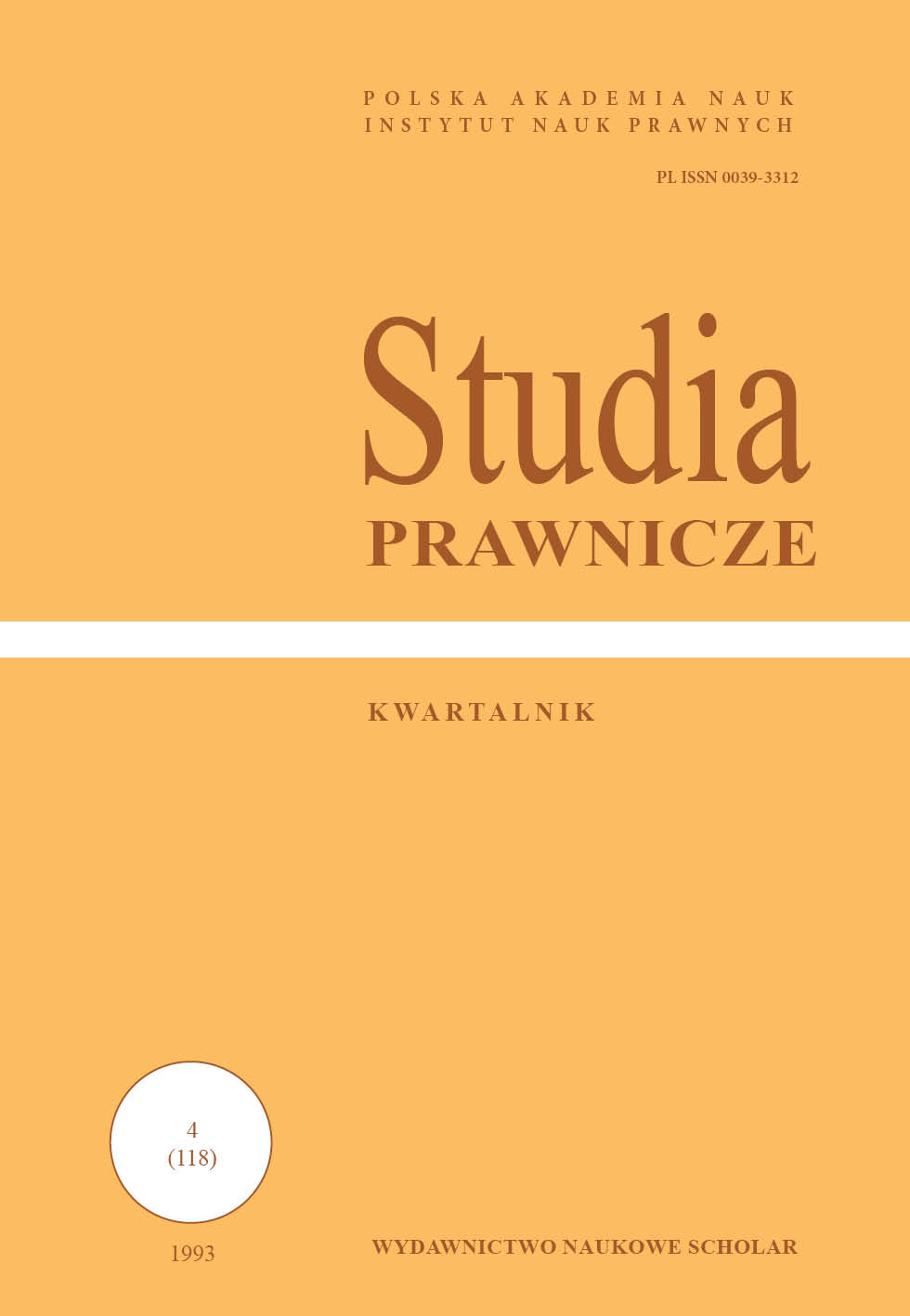Ochrona praw człowieka w świetle dokumentów KBWE
Protection of human rights in the light of CSCE documents
Author(s): Wojciech SzołygaSubject(s): Law, Constitution, Jurisprudence
Published by: Instytut Nauk Prawnych PAN
Keywords: human rights; preservation of rights; right to live; right to liberty; personal safety; right to privacy; freedom of conscience and religion; freedom of speech and print; national minority
Summary/Abstract: Launched at the time of signing of the CSCE Final Act, the Helsinki Process (officially the Conference on Security and Cooperation in Europe) is undoubtedly a significant yet unique element of the European institutional infrastructure. The currently existing network (system) of interconnected, in various forms, and relatively independent international structures and permanent institutions with a specialised functional profile and their low degree of formalisation allows the CSCE to be identified as an international organisation in statu nascendi. The dynamic political transformation taking place in the Old World (especially between 1989 and 1990) has had a significant impact on the functioning of the CSCE system as the main forum for pan-European political and humanitarian cooperation, while implying its self-transformation. The dynamics of the Helsinki Process determines the phenomenon of continuous expansion of the CSCE area onto new member states (currently 52). The specifics of the CSCE as a long-term and comprehensive political process is underlined by the principle of consensualism in the final decision-making phase and the cross-block political dialogue between the participating states.The recent, noticeable trend of a peculiar “saturation” of the Helsinki Process with human rights (expansion of the substantive and implementation scope) as a recognised area of activity of the CSCE is instrumental and may be treated as an important vehicle for systemic transformation in the unifying, post-bipolar Europe. The wording of the CSCE documents clearly place human rights in the area regulating relations between the states and underline their importance as “an integral part of a balanced approach to security and cooperation in Europe” (paragraph 41 of the Copenhagen Document).The concept of the Human Dimension (the Human Dimension of the CSCE) as a distinct subject area of inter-state cooperation was only introduced at the Vienna Follow-up Meeting in 1987. The conceptual category indicated above can be made relative to the following determinants: human rights, rule of law, pluralist democracy. It seems reasonable to assume that the CSCE document constitute an autonomous implementation regime of human rights protection of pan-European nature in the human dimension, rendering this dimension positive and institutionalised. Due to the multiple packages comprising the Conference on Security and Cooperation in Europe system (thematic baskets), it is immanently linked with other areas of activity of this international institution (e.g. with the similarly shaping, new pan-European security regime)3. The human dimension is characterised at the current stage by the still relatively weak degree of institutionalisation and normativisation of human rights and freedoms. The main subject of the considerations presented below shall include an analysis of the content and of the normative nature of stipulations related to human rights, executive procedures intended to implemented said rights and a determination of the degree of institutionalisation of the human dimension during the inter-Helsinki period (1975-1992).
Journal: Studia Prawnicze
- Issue Year: 118/1993
- Issue No: 4
- Page Range: 117-133
- Page Count: 17
- Language: Polish

